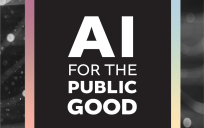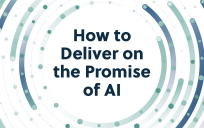Government agencies are beginning their transformation journeys to bring value to their customers. They need real-time insights that inform real-time actions, whether they’re responding to cyber intrusions, making medical decisions or managing logistics operations. Agencies need the ability to adjust their services to their consumers’ needs in days or minutes — not months.
“But they often have so many policy hurdles, and their processes are very complex,” said Daniel Lee, Solutions Architect at Red Hat, an open-source software solutions provider. “These can act as barriers in their transformation journey.”
These barriers create a ripple effect, leaving agencies hamstrung in their efforts to efficiently collect, analyze and act on massive heterogeneous data — from text to multimedia to logs and more. With massive data serving as the backbone for transformation, agencies need a strategy for extracting value out of their most critical asset.
Lee highlighted three key areas that agencies must prioritize to support data-driven transformation:
- Data governance. Every organization must lay down a data governance strategy that allows them to ensure proper handling of data while maintaining high standards for data quality and security. Laying down these policies and procedures first provides a foundation that can drive the agility needed when it comes time to developing data analytic initiatives.
- Artificial intelligence/machine learning with a zero trust security mindset. AI/ML is one of the fastest growing government IT initiatives, and a zero trust security model can provide the proper protection. This model starts with the raw data and does not stop until the resulting analytic outcomes. “For government agencies, security always starts with data,” Lee said. The reliability of the resulting AI/ML insights will depend on the security efforts that revolve around the entire software supply chain cycle.
- Technology platform. The workflow for AI/ML involves a plethora of activities, which involves very complex processes and procedures. This is where it is critical to have a platform, such as Red Hat OpenShift Container Platform, that can support agencies’ workflows endto-end and allow them to focus on delivering business results through their data analytics. For example, by mapping data governance requirements to the platform, it allows complex organizational policies and procedures, such as access control policies, to be supported through technology for scenarios that involve multiple data classification levels.
“It’s not about the technologies alone,” Lee said. “When you couple transformative technologies such as OpenShift with process and culture improvements, agencies will see holistic changes,” Lee said.
Culturally speaking, one of the misconceptions that must be addressed is that security is detrimental to efficiency. Rather, incorporating security from the start can enhance operations and help agencies accelerate their work by avoiding pitfalls that cause longer delays.
“If agencies follow these best practices, they’ll have real-time insights that allow them to make real-time actions, rather than always reacting,” Lee said. “It’s going to allow them to respond much quicker, even proactively many times, while heightening their security posture.”
This blog is an excerpt from our recent guide, “Technology Transformation Strategies: From Idea to Implementation.” Download the full guide here for best practices.





Leave a Reply
You must be logged in to post a comment.